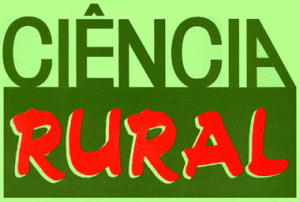By Juliane Elisa Welke, Professor and researcher, Laboratory of Food Toxicology, Universidade Federal do Rio Grande do Sul (UFRGS), Porto Alegre, RS, Brazil
searchers have found acrolein at levels sufficient to pose a health risk to consumers only if the exposure is daily. In case of sporadic consumption, this compound is not a concern. The detection was done in a study of researchers from the Federal University of Rio Grande do Sul, Brazil, interested in evaluating the amount of furfuryl alcohol and carbonyl compounds in foaming samples. The study is published in the journal Ciência Rural (vol. 49, no. 3).
In addition to finding acrolein in 24% of the tested samples, the researchers also detected low levels (not related to health risk) of ethyl carbamate (EC) and formaldehyde in all samples and of acetaldehyde, furfural and acrolein in 57%, 71% and 76% of the samples, respectively.
According to researcher Juliane Elisa Welke, the detection of acrolein in sparkling wines shows that it is necessary to elucidate the role of precursors, fermentation and storage in the occurrence of this compound. Raising this information can help in planning strategies to reduce acrolein in sparkling wines.

Image: Skitterphoto.
The toxic compounds evaluated by the study are reported in the literature as causing cancer in the oral cavity, pharynx, larynx, liver and kidneys (AMBAW, et al., 2018; ARTS, et al., 2004; LACHENMEIER; KANTERES; REHM, 2009). The evaluation of the levels of these compounds is an interesting tool to maintain quality control of sparkling wines.
Juliane’s research group had already evaluated the occurrence of carbonyl compounds in wines made from grapes of the cultivars Syrah and Merlot. The results were published in Ferreira, et al. (2018, 2019) and Lake, et al. (2017). This is the first study of the group that maps these toxic compounds and their risk to consumer health into sparkling wines.
References
AMBAW, A., et al. Acrolein-mediated neuronal cell death and alpha-synuclein aggregation: Implications for Parkinson’s disease . Mol Cell Neurosci [online]. 2018, vol. 88, pp. 70-82, ISSN: 1044-7431 [viewed 13 June 2019]. DOI: 10.1016/j.mcn.2018.01.006 . Available from: https://www.ncbi.nlm.nih.gov/pubmed/29414104
ARTS, J.H.E., et al. Subacute (28-day) toxicity of furfural in Fischer 344 rats: A comparison of the oral and inhalation route. Food and Chemical Toxicology [online]. 2004, vol. 42, no. 9, pp. 1389-1399, ISSN: 0278-6915 [viewed 13 June 2019]. DOI: 10.1016/j.fct.2004.03.014 . Available from: https://www.sciencedirect.com/science/article/pii/S0278691504001073
LACHENMEIER, D.W., KANTERES F. and REHM, J. Carcinogenicity of acetaldehyde in alcoholic beverages: risk assessment outside ethanol metabolism. Addiction [online]. 2009, vol. 104, no. 4, pp. 533-550, e-ISSN:1360-0443 [viewed 13 June 2019]. DOI: 10.1111/j.1360-0443.2009.02516.x . Available from: https://onlinelibrary.wiley.com/doi/abs/10.1111/j.1360-0443.2009.02516.x
FERREIRA, D.C., et al. Carbonyl compounds in different stages of vinification and exposure risk assessment through Merlot wine consumption. Food Additives and Contaminants [online]. 2018, vol. 35, no. 12, pp. 2315-2331, e-ISSN: 1944-0057 [viewed 13 June 2019]. DOI: 10.1080/19440049.2018.1539530 . Available from: https://www.tandfonline.com/doi/abs/10.1080/19440049.2018.1539530
FERREIRA, D.C., et al. Development of a method for determination of target toxic carbonyl compounds in must and wine using HS-SPME-GC/MS-SIM after preliminary GC×GC/TOFMS analyses. Food Analytical Methods [online]. 2019, vol. 12, no. 1, pp. 108-120, e-ISSN: 1936-976X [viewed 13 June 2019]. DOI: 10.1007/s12161-018-1343-6 . Available from: https://link.springer.com/article/10.1007%2Fs12161-018-1343-6
LAGO, L.O., et al. Influence of ripeness and maceration of the grapes on levels of furan and carbonyl compounds in wine – Simultaneous quantitative determination and assessment of the exposure risk to these compounds. Food Chemistry [online]. 2017, vol. 230, pp. 594-603, ISSN: 0308-8146 [viewed 13 June 2019]. DOI: 10.1016/j.foodchem.2017.03.090 . Available from: https://www.ncbi.nlm.nih.gov/pubmed/28407955
To read the article, access it
PETERLE, G.P., et al. Exposure risk to carbonyl compounds and furfuryl alcohol through the consumption of sparkling wines. Cienc. Rural [online]. 2019, vol. 49, no. 3, e20180986, ISSN: 0103-8478 [viewed 13 June 2019]. DOI: 10.1590/0103-8478cr20180986. Available from: http://ref.scielo.org/5jndf2
External links
Ciência Rural – CR: <http://www.scielo.br/cr>
Como citar este post [ISO 690/2010]:
















Recent Comments